Ray Turner
San Jose, California
Wooden box and acrylic box
Most visitors to our house are intrigued by our Mystic Mountain Railroad, having never seen one before, and want to see the trains run. Except for little kids, who will chase the trains for an hour or more, adults just want to see the trains run for 5-10 minutes. If I had to retrieve engines and cars from the garage and put them on the track, that would take 10 minutes right there, and I wouldn’t be inclined to bother. I think it is valuable to be able to run at least one train within a minute or two, so that I can easily run for a visitor. Thus, I needed a train-storage box that I could quickly open, turn the train on, and run.
Three-track wood. I first built a three-track train storage box, 16 feet long, from OSB. I pitched the cover for rain runoff, painted the outside with house paint, and sealed the inside with Thompson’s. I built the roof in three sections—three feet, five feet, and eight feet—so it would not be hard to lift. The three-foot top gave enough access to turn on the battery and change the battery in each locomotive. Trains would back in and pull out via a three-position frogless switch. In spite of two coats of paint and the pitch on the cover, the OSB started de-laminating after two years, so I replaced the cover with acrylic, painted the outside, and insulated the inside. This is weatherproof and sun-proof (but not bird-proof). I originally planned the dimensions so that the box could be built out of two 4 x 8 sheets of OSB. I also planned the new acrylic cover so that it could be built out of one 4 x 8 sheet of acrylic. Based on my experience with OSB, “exterior” plywood, and wood trestles, I have sworn off using wood outside—too much maintenance. I build structures out of acrylic, steel, or concrete now.
1-track acrylic. I needed a storage box 20-feet long for my unit coal train. I decided to build it out of acrylic, since it would be weatherproof and sun proof and the material is a dream to work with. It is made up of two 8-foot long sections and a 4-foot long section. Due to its lower location, people can barely see it, so no façade makes sense.
Regarding the floor inside, the wood you see is stripwood that guides the wheels down the center of the box, keeping the cars from jackknifing while backing in. The cars roll off the rails onto the bottom of the box (purely to save money on track). Plastic pieces were added there to make a ramp for this. They also guide the wheels when coming out of the box to get them onto the rails again. It is hard to see but the tops of the rails are also chamferred to help guide the wheels up onto them. It was complicated but saved me $120 on track inside the box.
I painted the outside a light tan to blend into the surroundings and keep the sun from overheating the inside of the box. Also, there are many kinds of plastic. The temperature at which acrylic will permanently deform is over 200 degrees F.
Mechanical stiffeners give the box a frame for strength. The top of the three-track box is about 20″ wide and 8′ long and about 3/16″ thick. I bonded 1.5″-wide vertical strips of acrylic to the edges. I use the same technique on any acrylic project, or even a steel or wood project, where sagging/warping is possible.





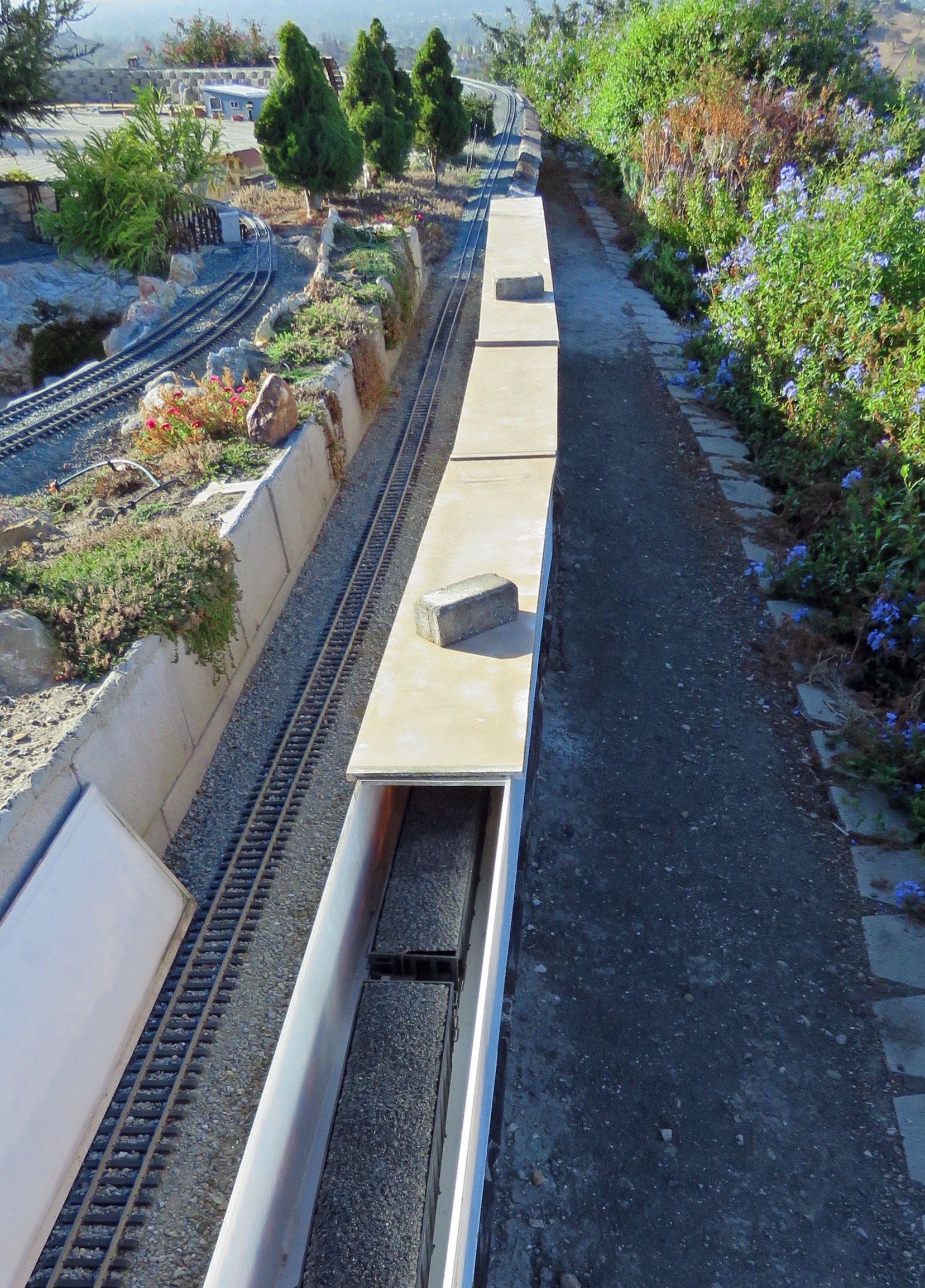
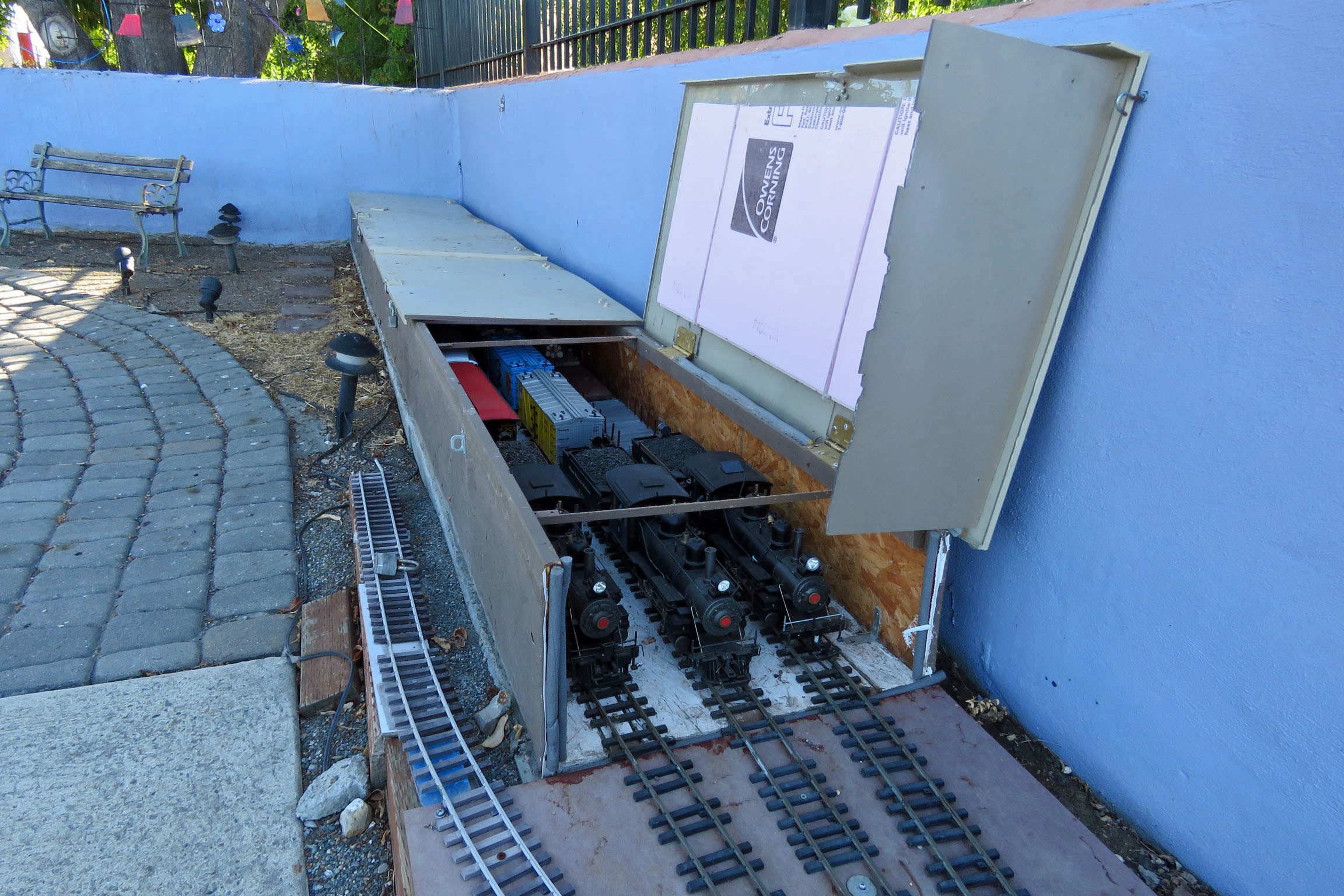
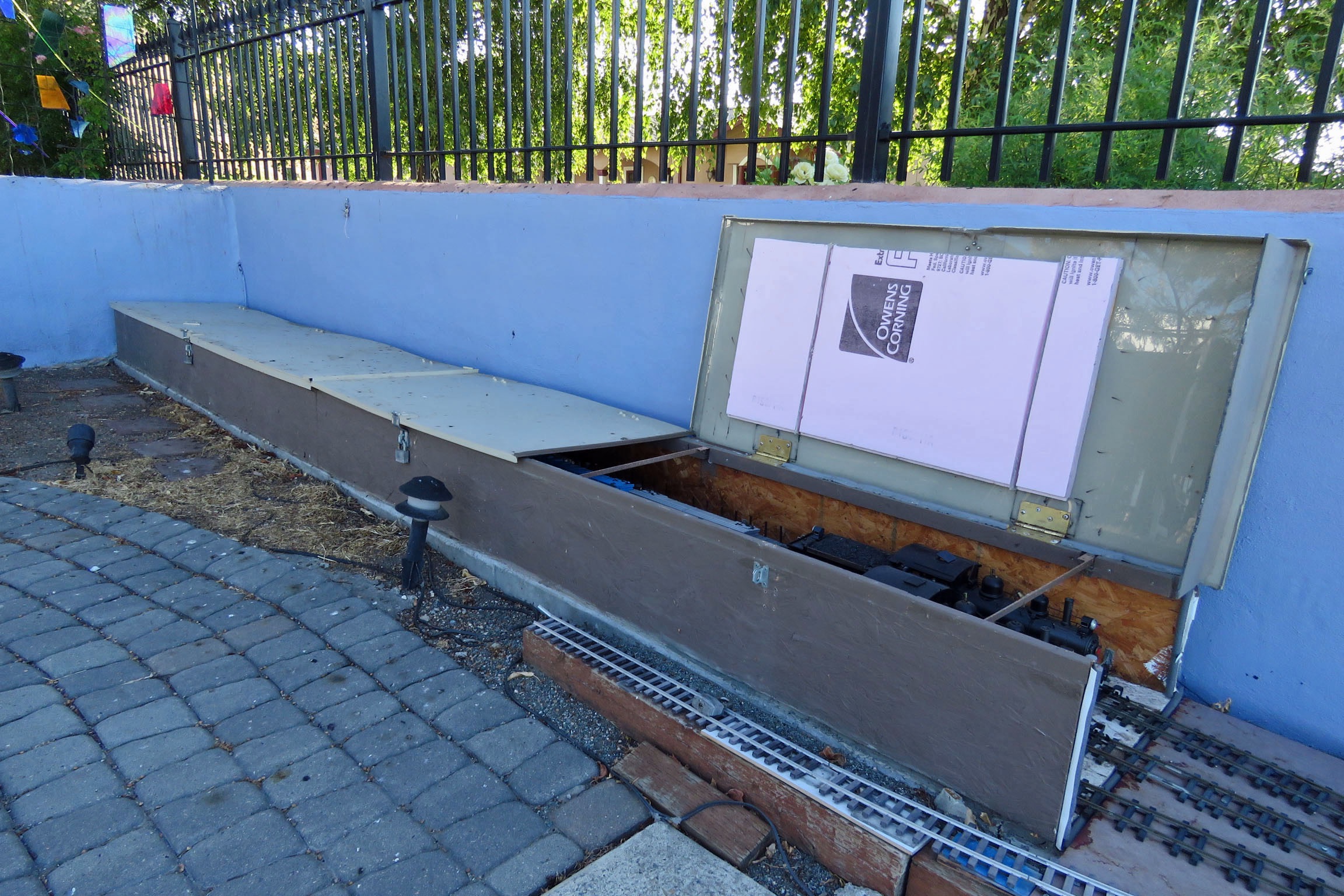
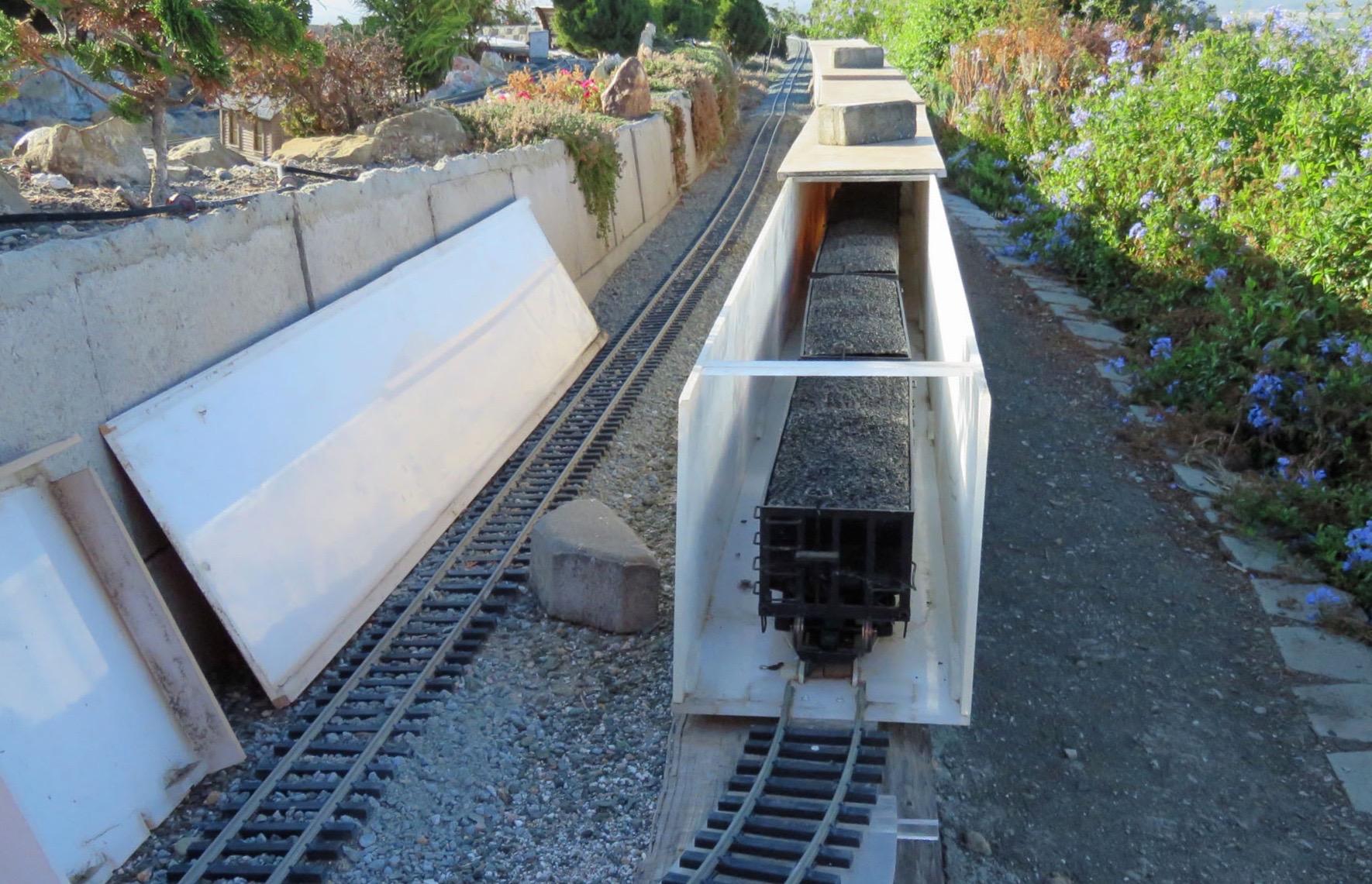
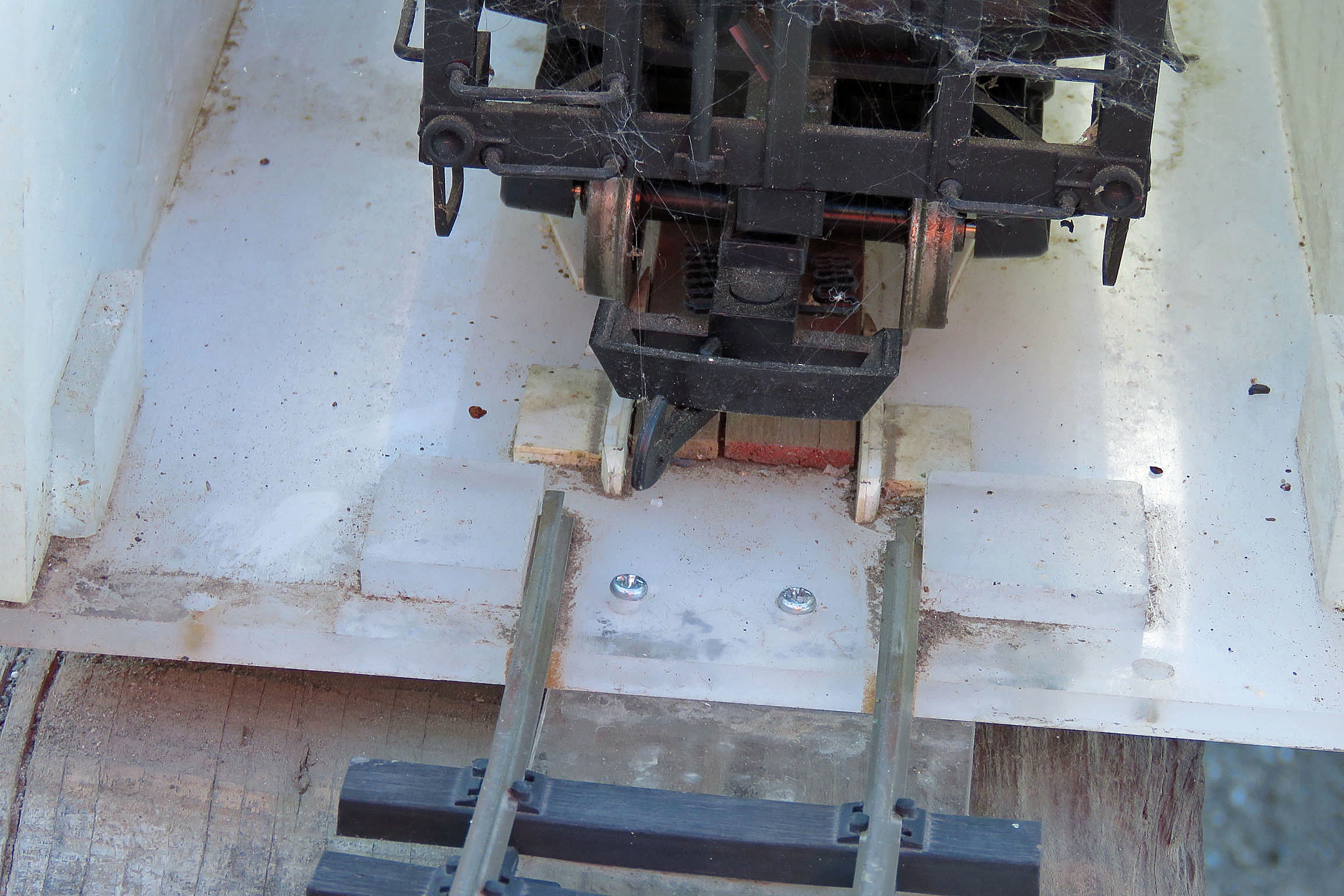
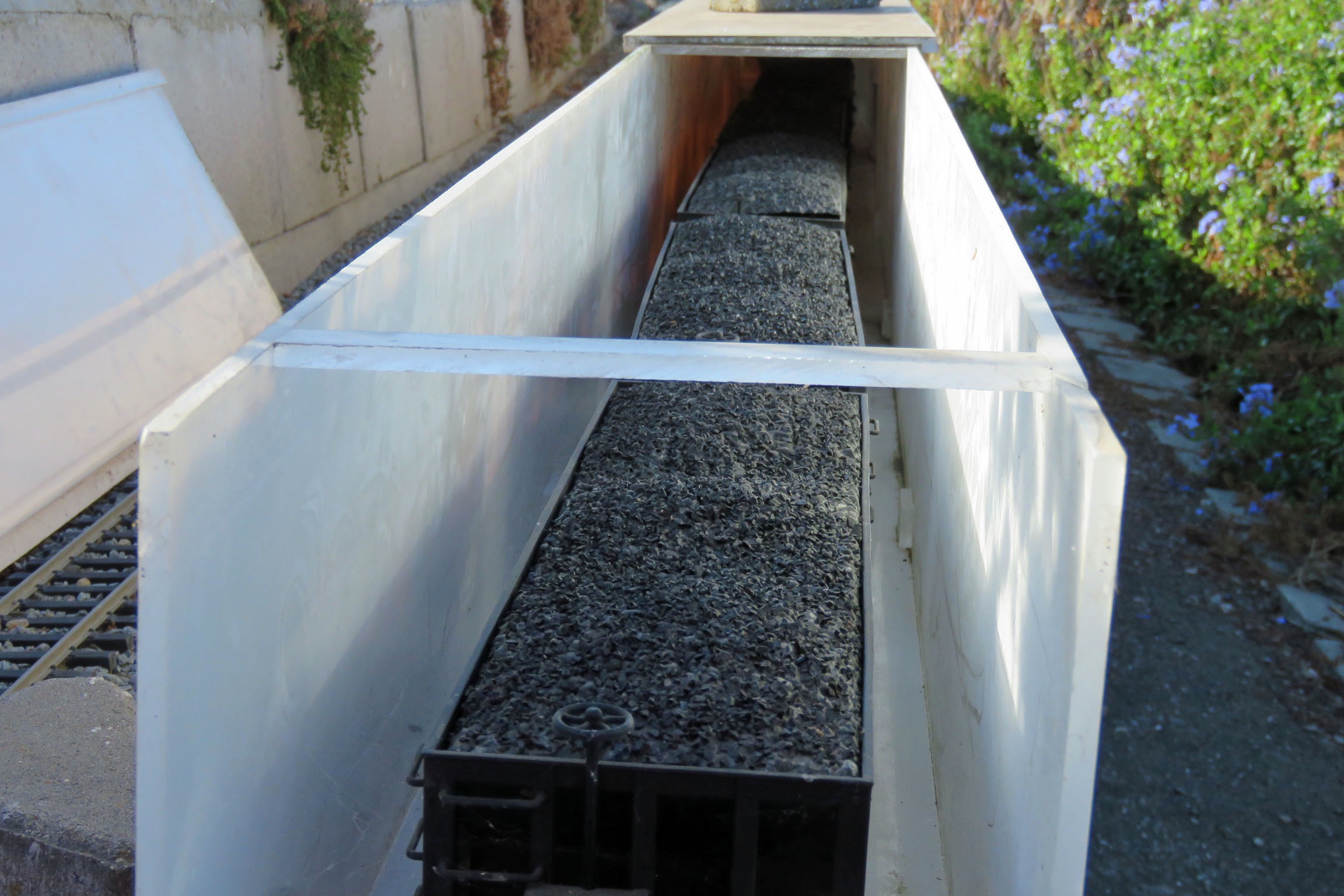

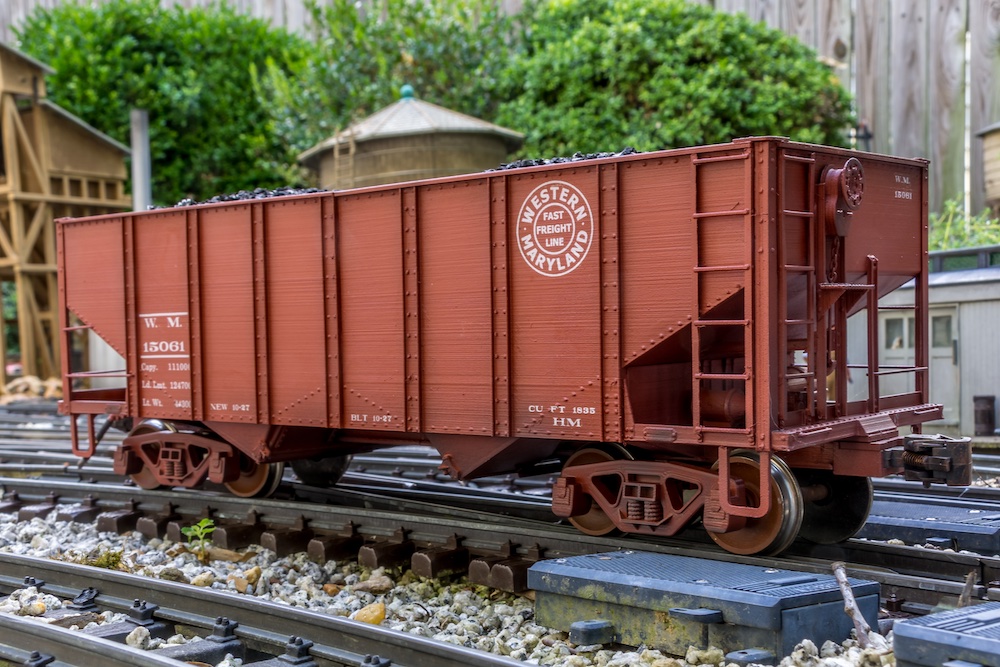
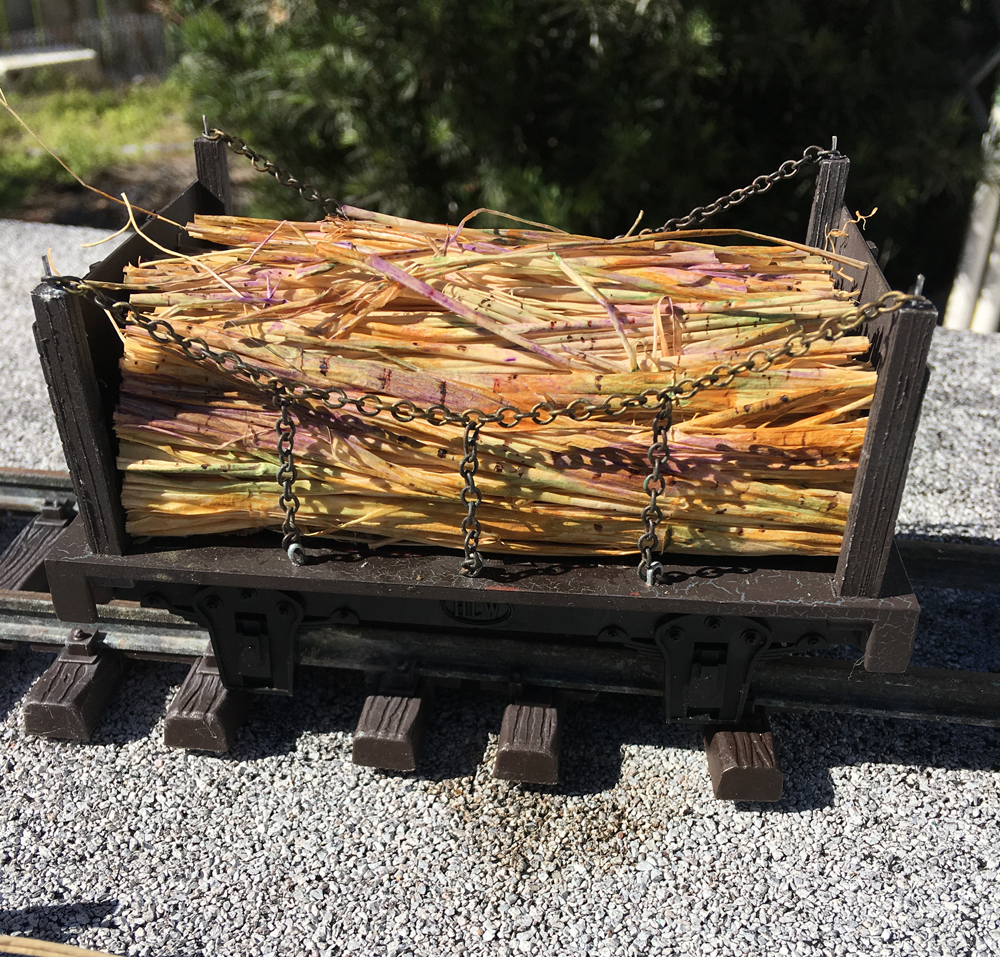
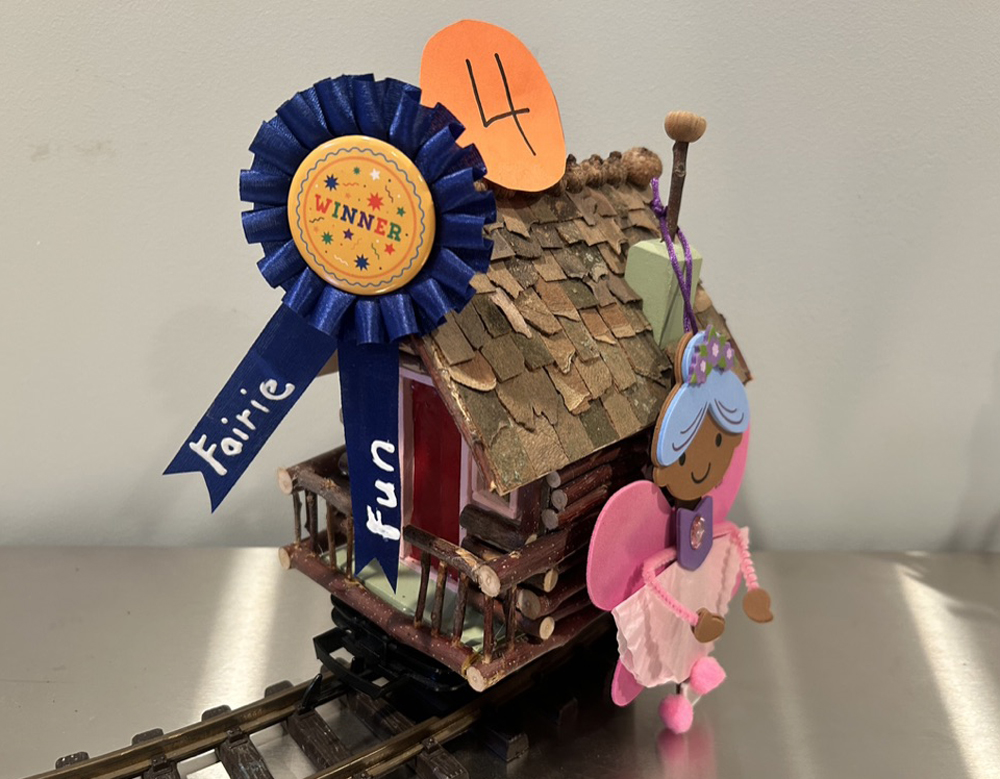
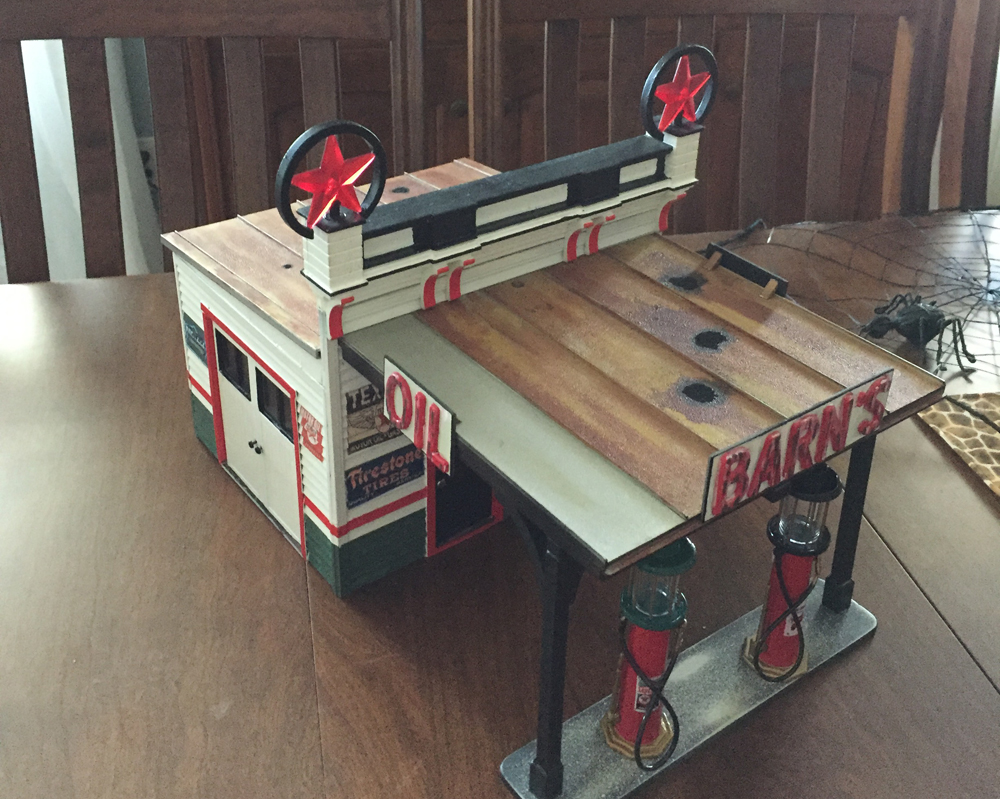




I’ve been looking for something like this!